

Main house of the Novo-Ogaryevo residence.
Legion mediaThis is the place Putin calls home.
Located in the western part of the Moscow Region, not far from the capital, this residence is not a state secret, and it pops up in Google maps searches quite readily.
Novo-Ogaryevo became Putin’s official residence in 2000. Although he does not own the estate, he considers it home, which can easily be deduced from the fact that the residence remained in his de-facto possession when he took a four-year-long break from the presidency in 2008-2012, serving as Russia’s prime minister. According to Russian law, a retiring president can choose a residence to be allocated for perpetuity. Leaving office in 2008, Putin chose Novo-Ogaryevo.
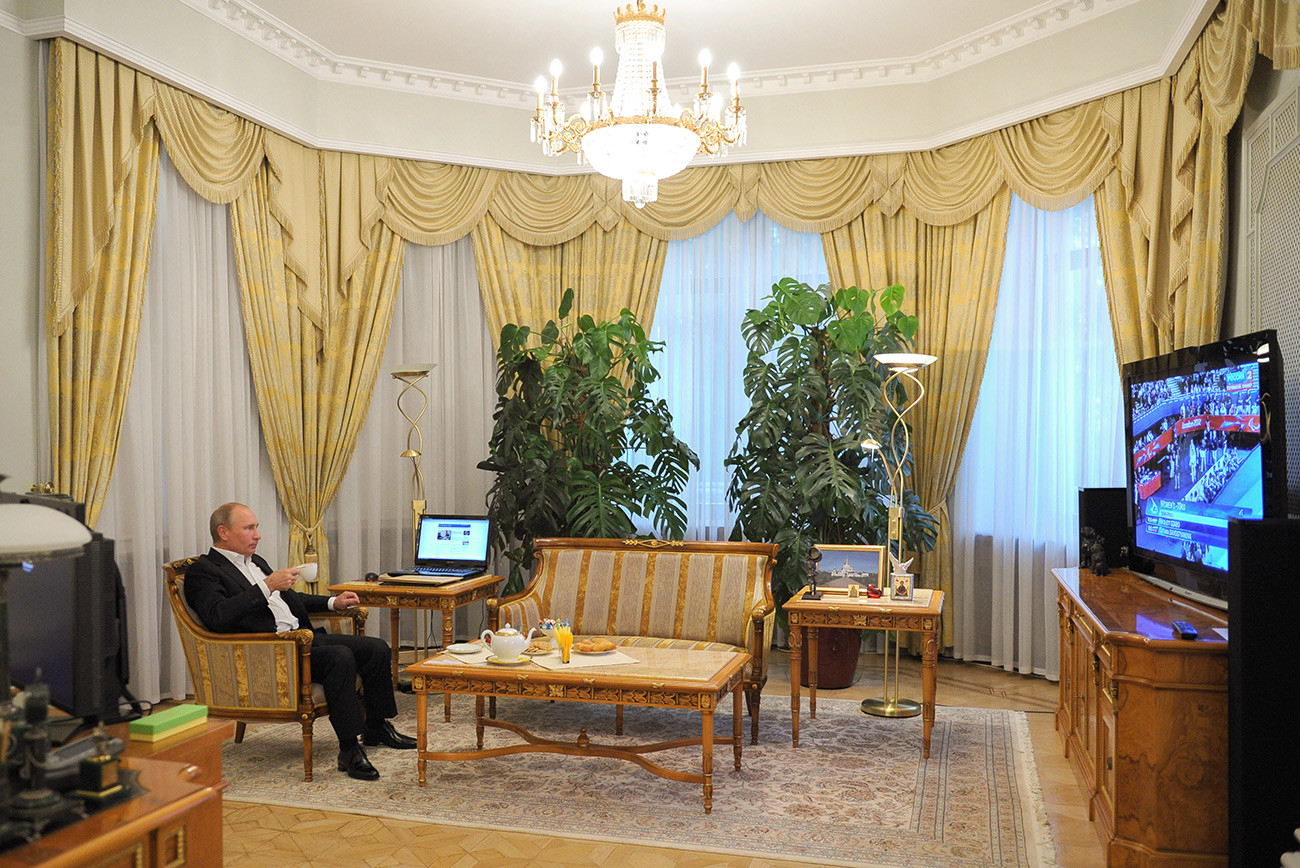
Putin in Novo-Ogaryevo.
AFPThe estate’s main house was built in the 19th century by order of Grand Duke Sergei Alexandrovich, the brother of Emperor Alexander III, and was later used as a residence by the Soviet government to welcome foreign delegations.
Unlike the White House, Novo-Ogoryevo is closed to the public. Still, here is an hour-long sneak peek inside. You can even see what’s in Putin’s fridge, 38 minutes and 16 seconds into the video.
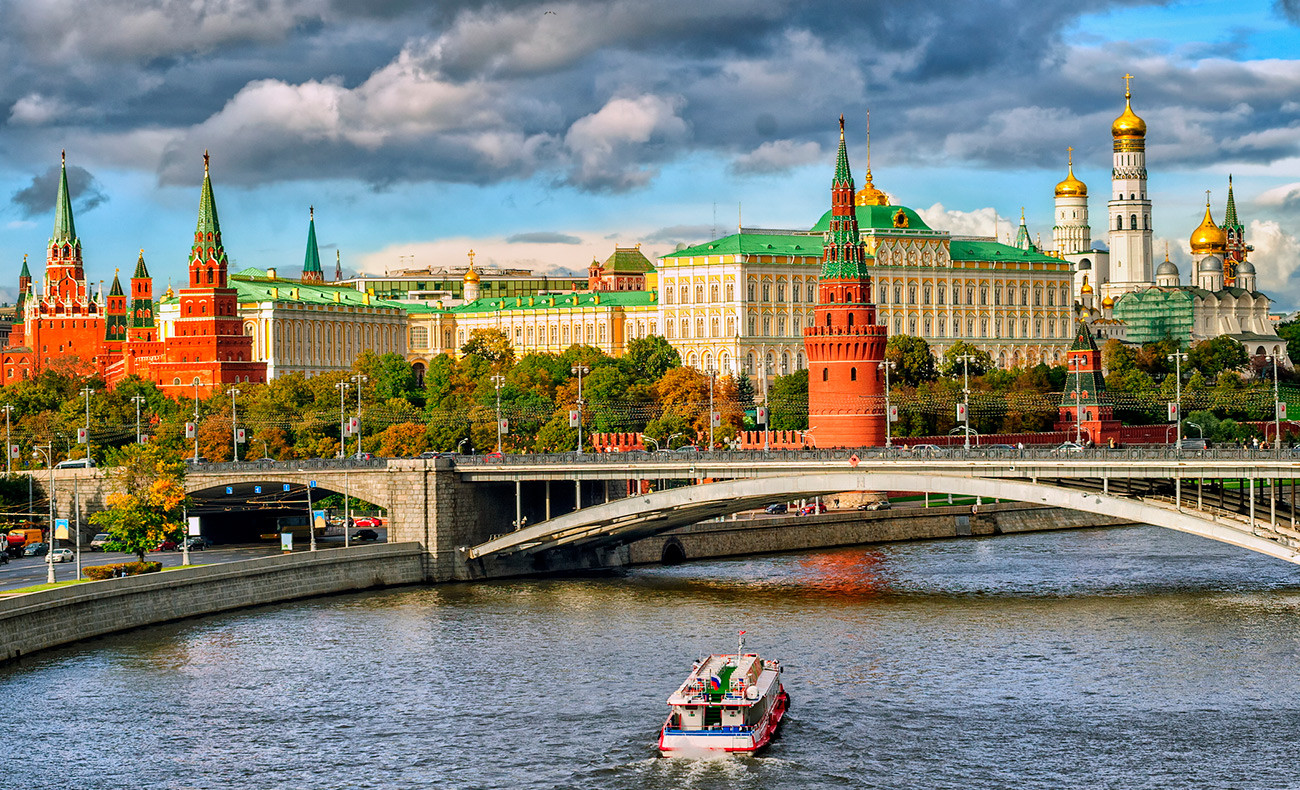
The Moscow Kremlin.
Kremlin.ruSince the Middle Ages, (with the exception of the years 1712 to 1917), the Moscow Kremlin was the main official residence of Russian leaders.
The President’s office is located in the Kremlin Senate, a historic building built by order of Catherine the Great from 1776 to 1787. Originally, it housed the Moscow branches of the Governing Senate.

President Putin's office in the Kremlin.
Kremlin.ruPutin’s Kremlin office is located in the center of the building’s north wing. Unlike the U.S. presidential office, the Kremlin office is a rectangular shape, and in contrast to the Oval Office , the windows are located on the left side of the president’s table, not behind it. The table also differs in form from the one in the Oval Office: it has an elongated adjustment in front where Russia’s president holds one-on-one meetings with other government officials. The walls of the Kremlin office are inlaid with oak panels, and the ceiling is decorated with an ornamental pattern and has two massive chandeliers.
On the table multiple phones comprise the secure communication system used by Russia’s president.
Also unlike the U.S. president, who is expected to live in the White House, Putin does not live in the Kremlin. Naturally, he can always drop by his historic office in a helicopter or by car.
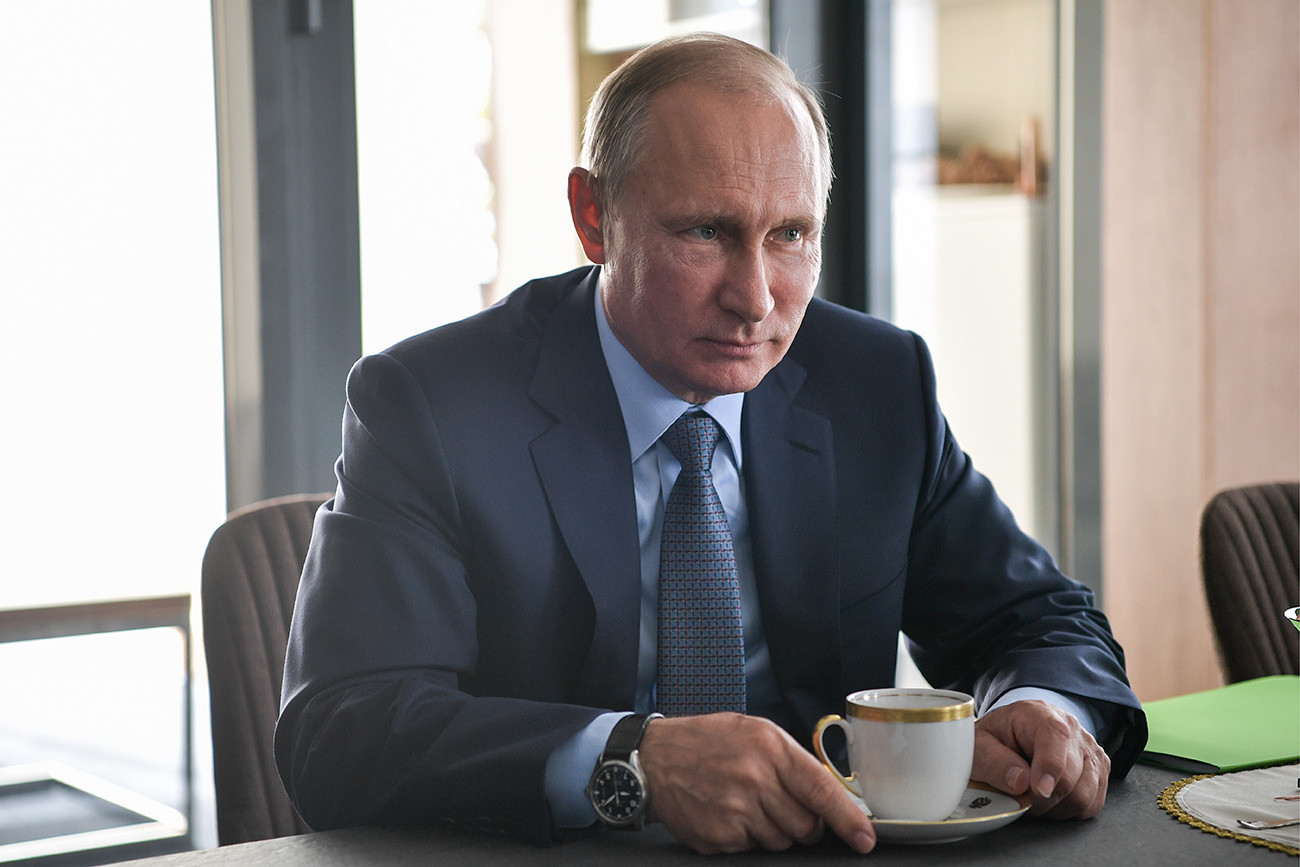
This is the only residence that officially belongs to Putin as a private individual. This 77-square-meter apartment is remarkably modest for Russia’s president. Little is known about how it looks or even the approximate location, and the only bit of information is its size, which tells us it must be a two- or three-bedroom apartment in a residential building somewhere in Russia. Odds are that it’s in St. Petersburg, where Putin grew up.
Putin also owns a garage that measures 18-square meters.
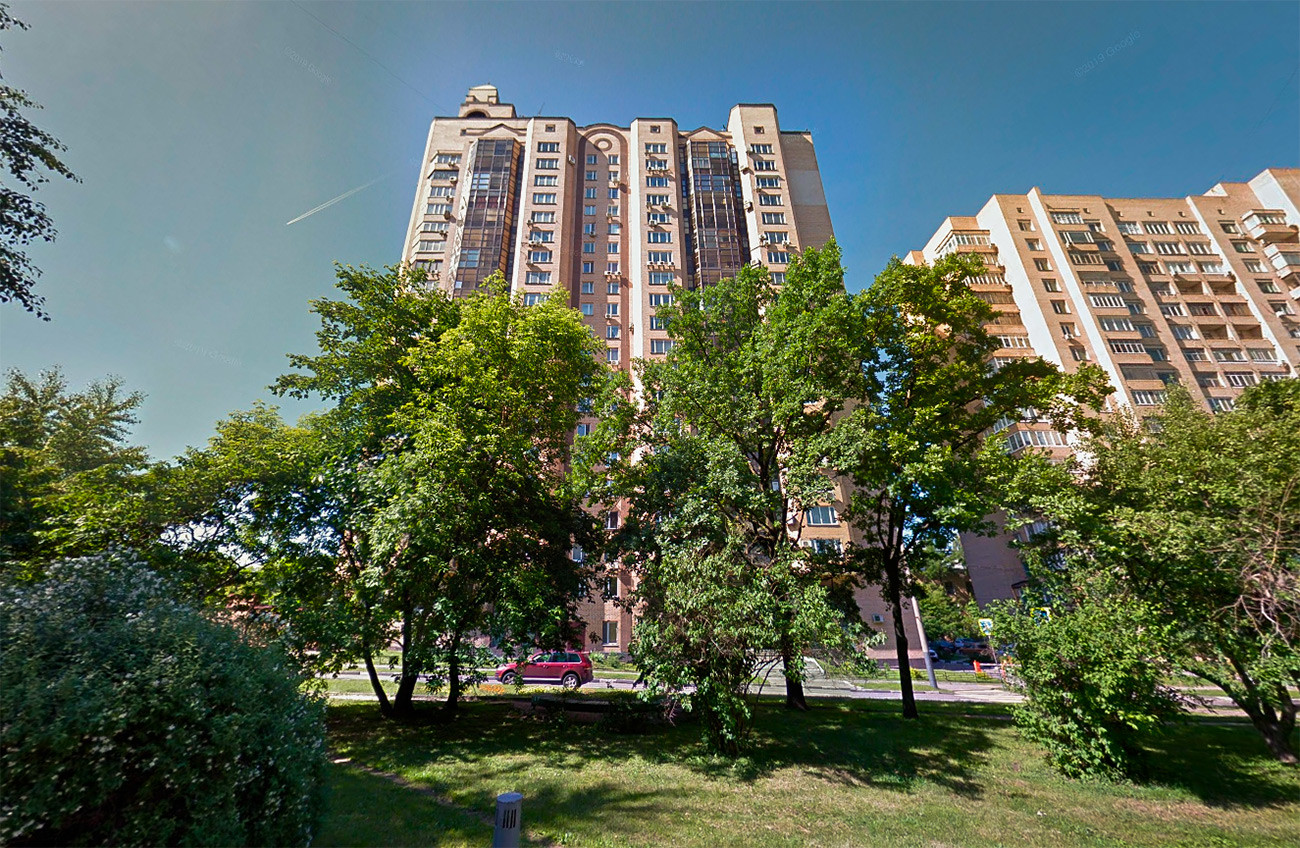
Akademika Zelinskogo Street, 6.
Google mapsPutin’s address in Moscow is widely publicized in the media: Akademika Zelinskogo Street, 6. The apartment is 153.7 square meters, and it was allocated to Putin in his capacity as Prime Minister under Boris Yeltsin in the late 1990s.
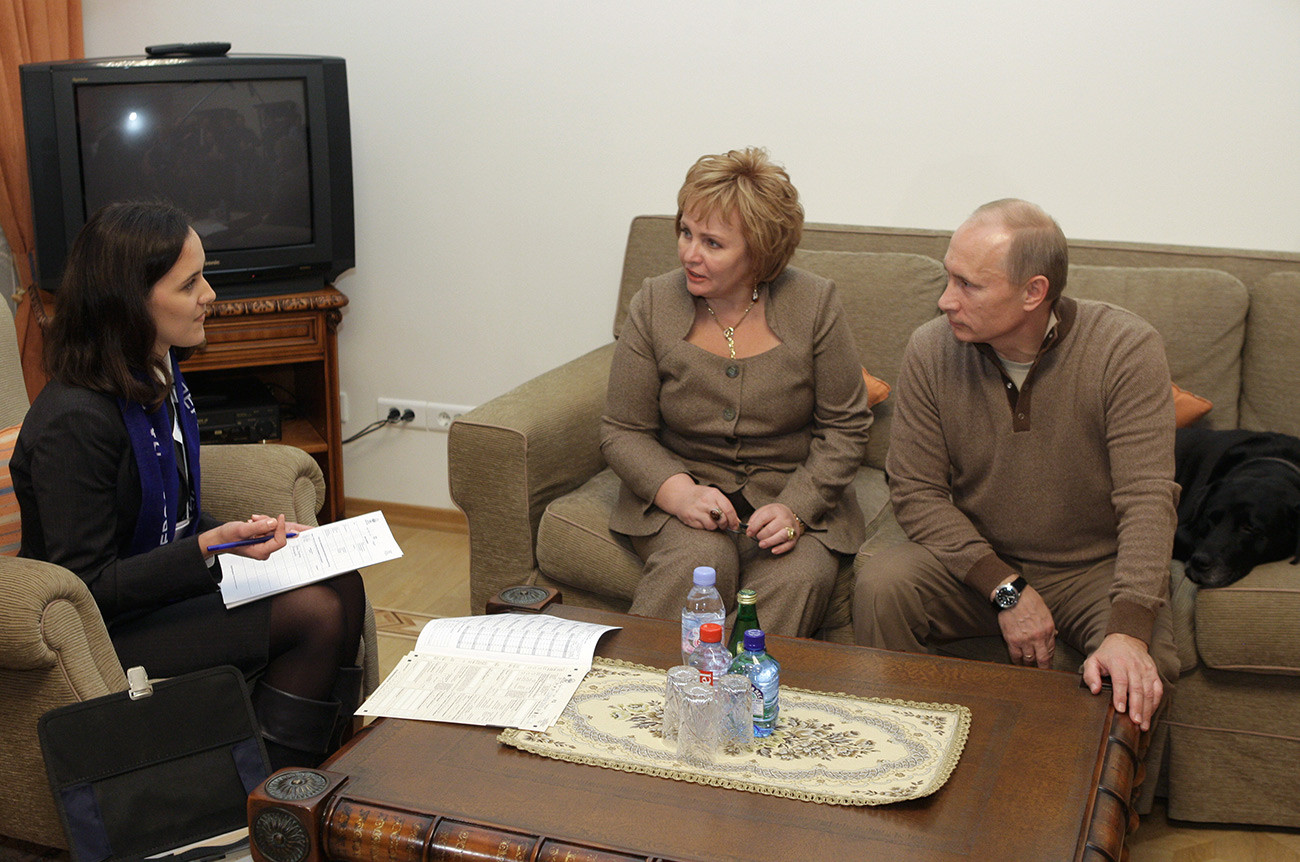
Although it’s not known what floor the apartment is on, we have a couple of photos taken inside the modest apartment.
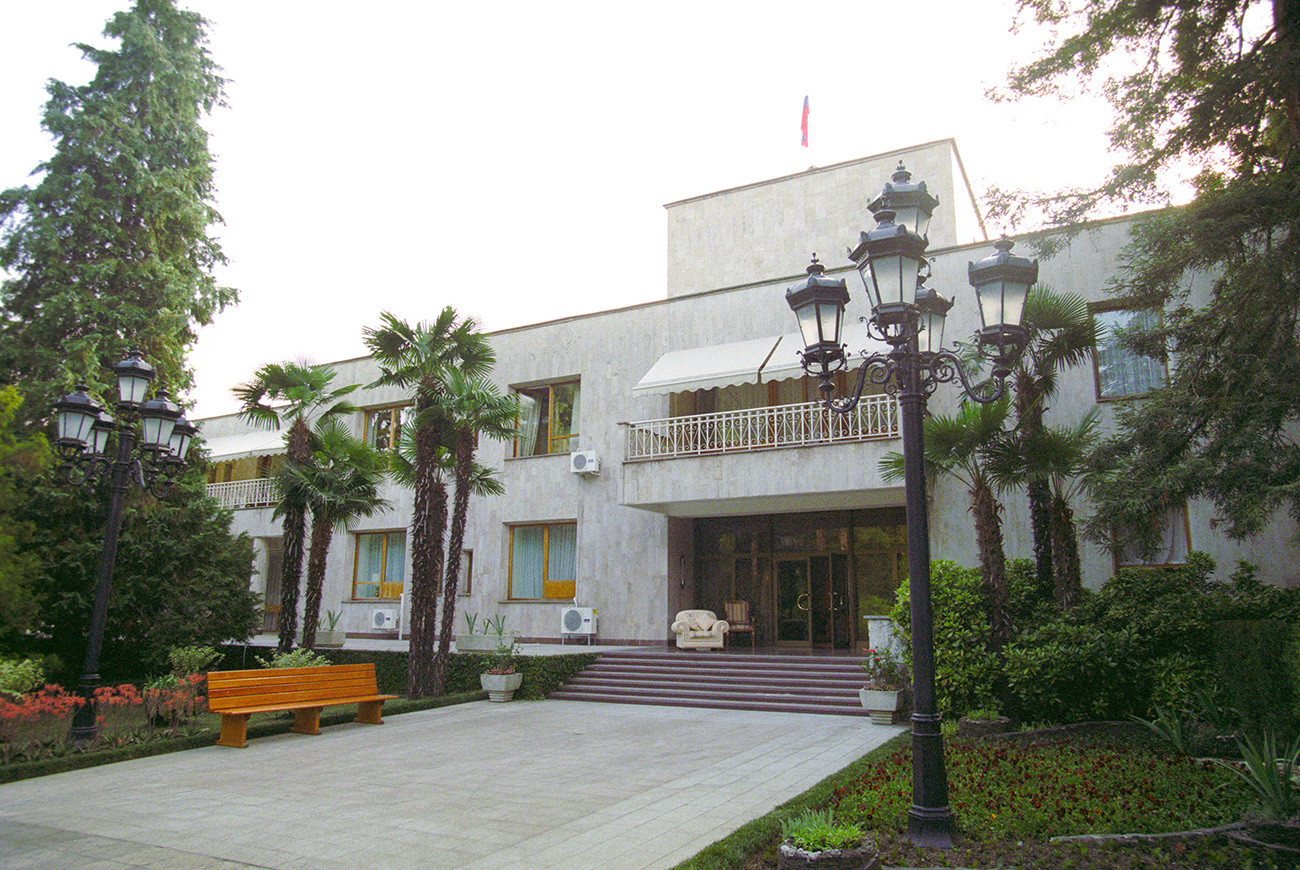
Bocharov Ruchey residence in Sochi, Russia.
Alexandr Sentsov/ТАSSIn addition to his main residence, Putin has a number of residences throughout Russia. One of the most widely publicized is Bocharov Ruchey in Sochi.
Completed in 1955, it was commissioned by Kliment Voroshilov, a Soviet marshall and strongman under Joseph Stalin. This government dacha was frequented by Soviet leaders such as Khrushchev and Brezhnev. In modern Russia, Bocharov Ruchey became an official summer residence of Russia’s president, and it’s the only government dacha on the Black Sea.
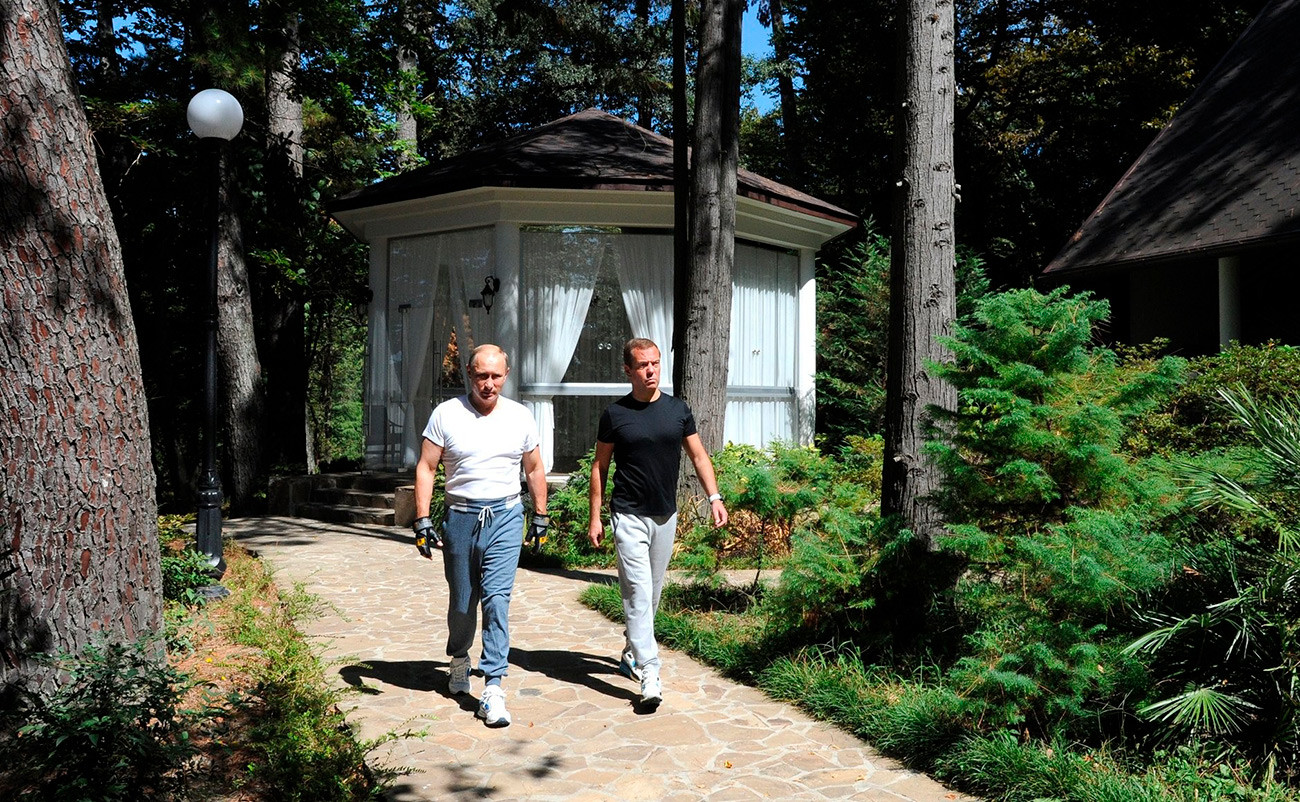
Vladimir Putin and Dmitri Medvedev in Bocharov Ruchey residence in Sochi.
Kremlin.ruHere, Putin met U.S. President George W. Bush in 2008, and in 2018 he welcomed Germany’s Chancellor Angela Merkel with flowers.

The Valdai residence was initially planned as one of Stalin’s dachas, but he thought it too dangerous.
Aeros'emka Velikiy NovgorodAnother official residence is located in the Novgorod Region, and goes by three different names: Valdai, Uzhyn, and Dolgie Borody.
The residence was initially planned as one of Stalin’s dachas, but he thought it too dangerous: in the 1930s the residence was the only building on a small peninsula and was surrounded by dense forest, with only one escape route to the mainland.

Vladimir Putin and Silvio Berlusconi at President Putin's Valdai residence in Russia.
Alexei Nikolsky/SputnikNevertheless, the Valdai residence was completed in the 1980s. The first president of Russia, Boris Yeltsin, liked fishing here. When Putin inherited the highest office, he also received the right to use the Valdai residence.
Surprisingly, you can check in and spend a couple of nights in one of the houses, but not in the actual president’s residence. It will only cost some $800 (50,000 rubles) for a stay of two nights.
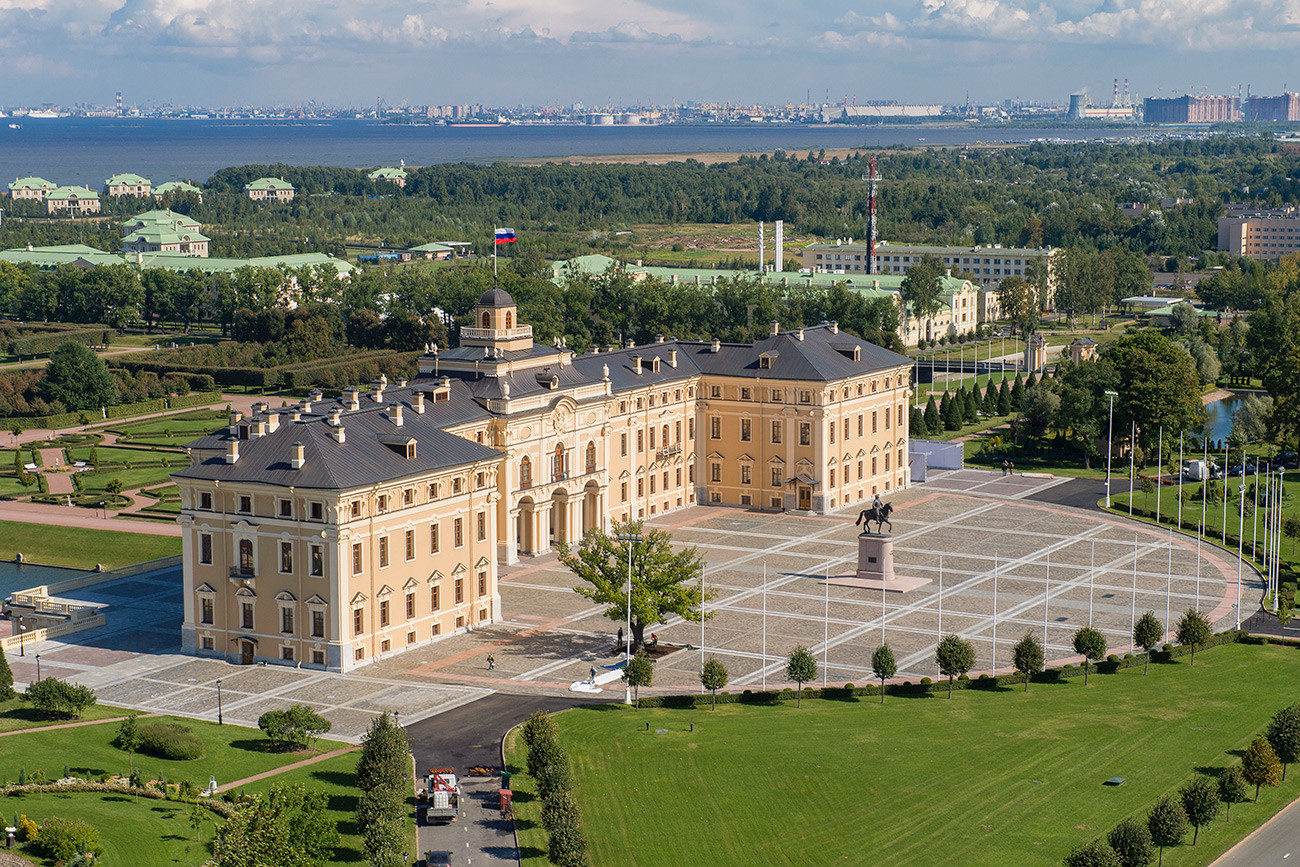
This palace, formerly owned by the Romanov family, is located on the Gulf of Finland, only 20 kilometers from the center of St. Petersburg.
Initially planned by Peter the Great as an imperial residence that would eclipse Versaille in its glory Grand Duke Konstantin Pavlovich of Russia resided here.
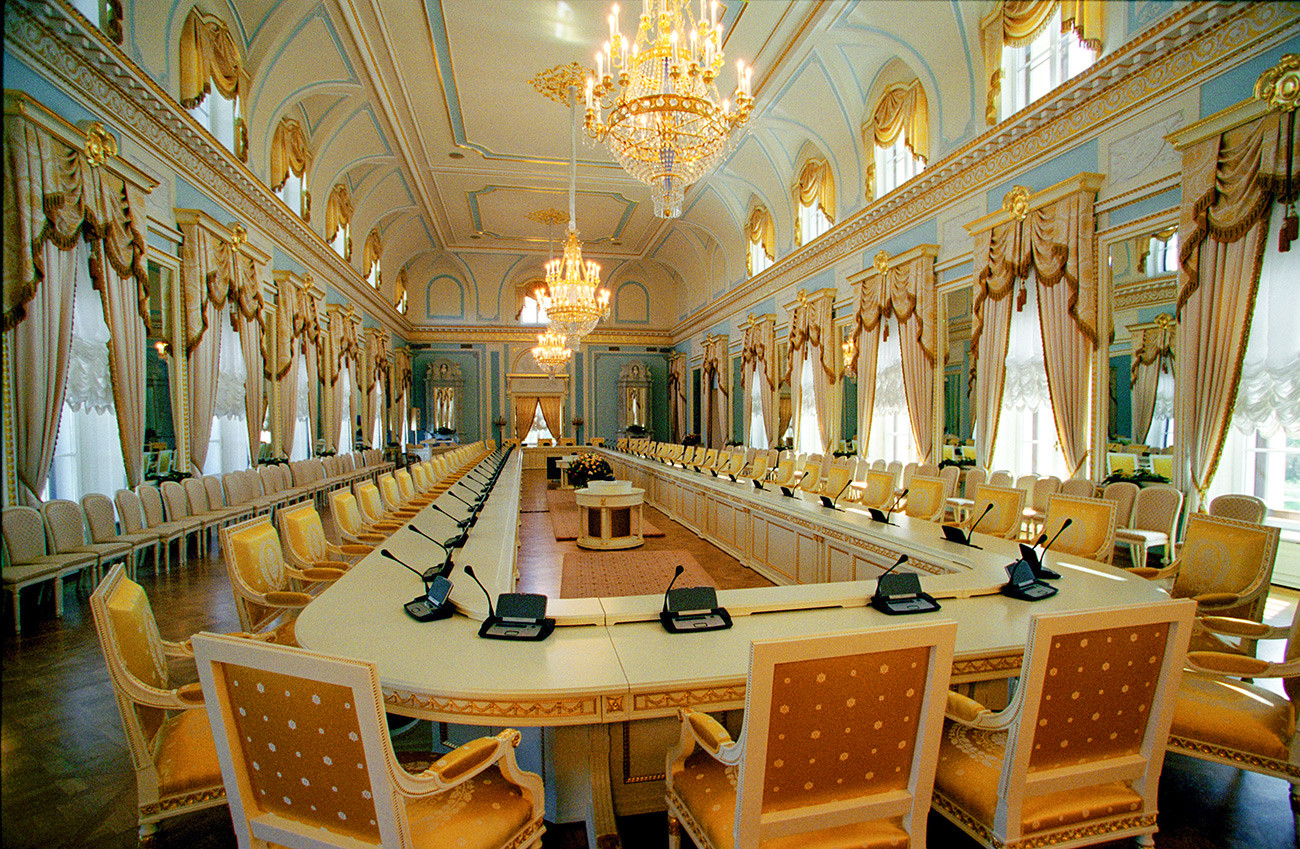
In Soviet times, the estate became known as the Congress Palace, and was severely damaged during World War II. Also, it hosted students of the Leningrad Arctic School, but slowly decayed after the collapse of the USSR until the early 2000s when the Office of the President launched a massive restoration.
Although Putin does not live here, the palace is often used for official state events. The Konstantin Palace served as a venue for both the G-8 and G-20 summits in 2006 and 2013, respectively.
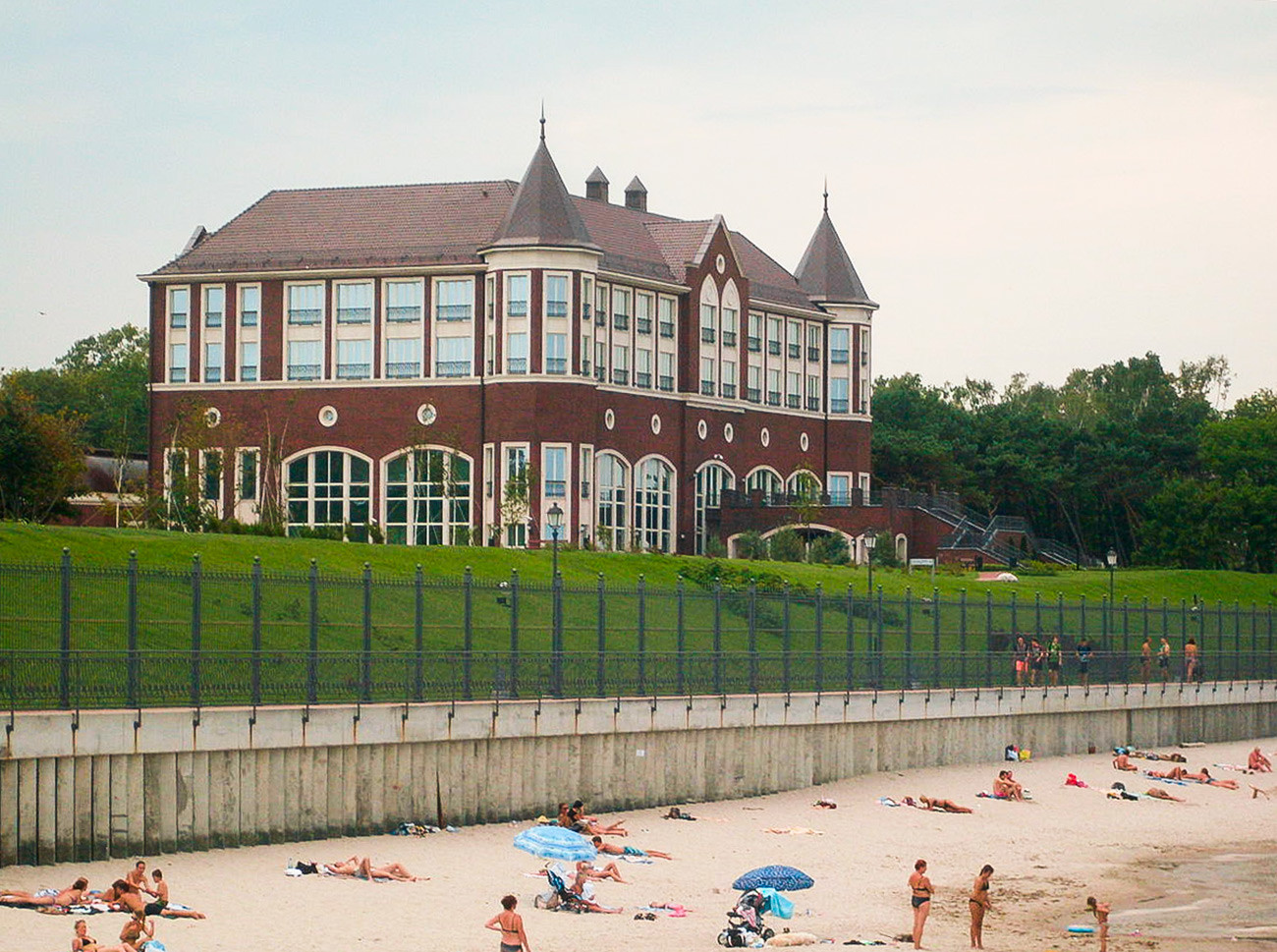
This presidential residence in Kaliningrad was built in the same place where the first Chancellor of the German Empire, Otto von Bismarck, had his palace.
During the War, the place hosted the Luftwaffe barracks. The current state residence was only completed in 2011 and opened by then-President Dmitri Medvedev.
Although the residence officially belongs to the Office of the President, it has only hosted Medvedev and Minister of Foreign Affairs Sergei Lavrov.
If using any of Russia Beyond's content, partly or in full, always provide an active hyperlink to the original material.
Subscribe
to our newsletter!
Get the week's best stories straight to your inbox